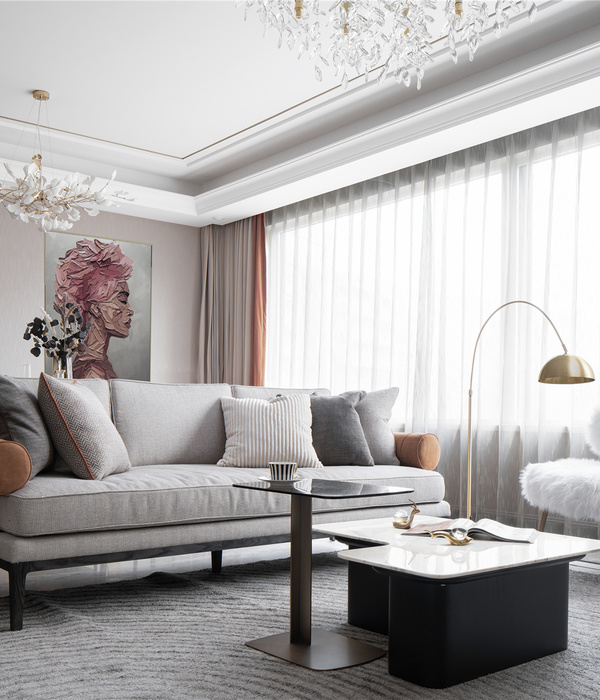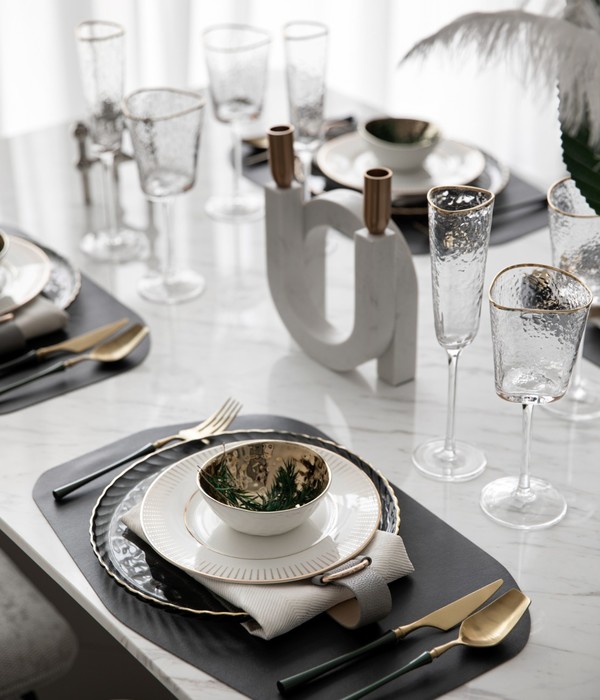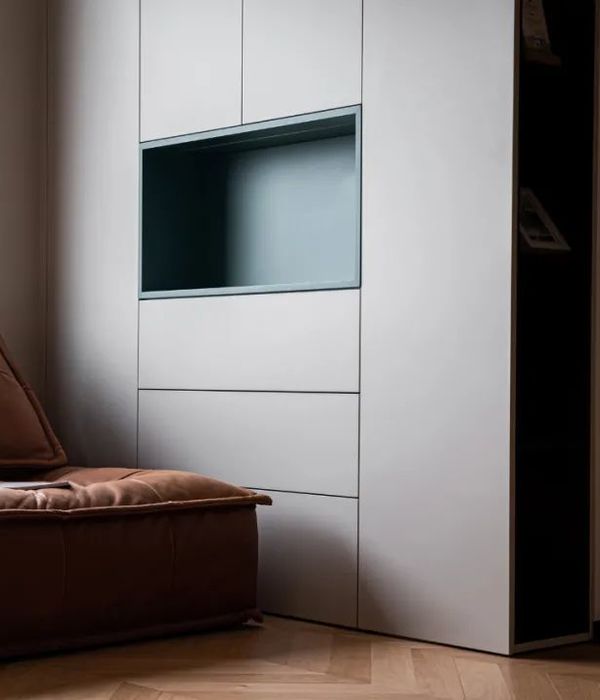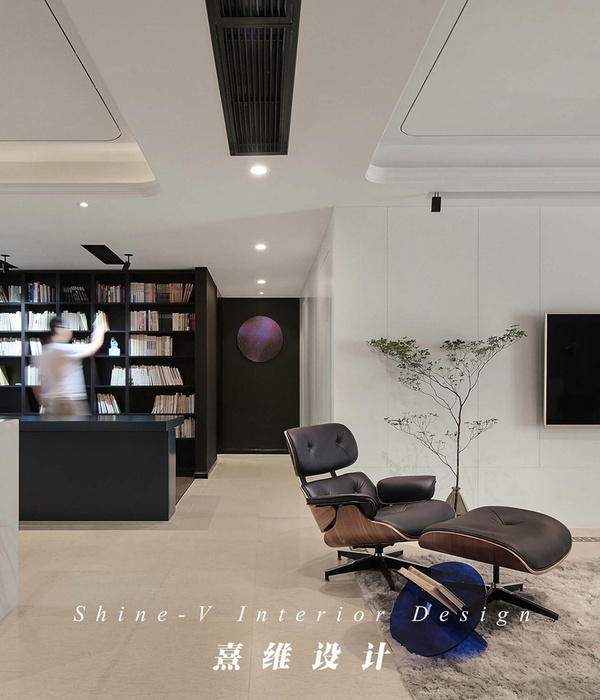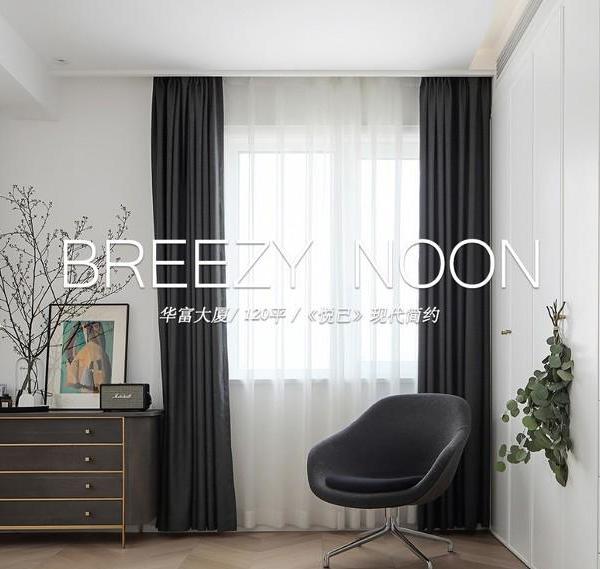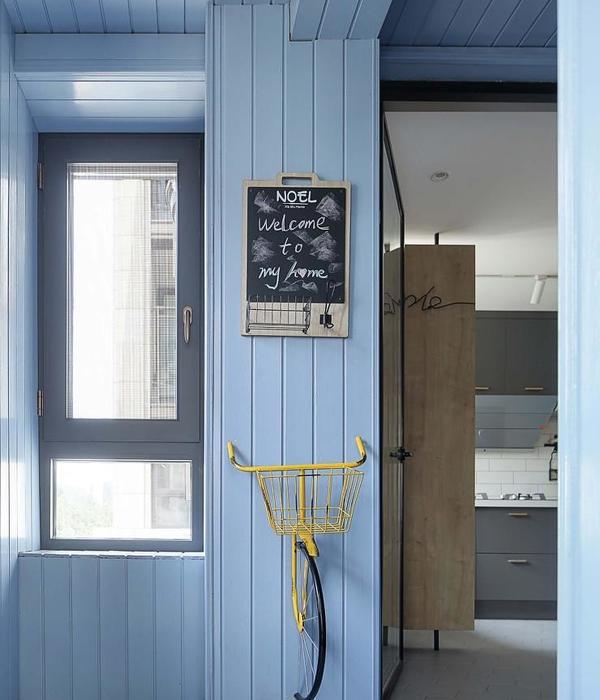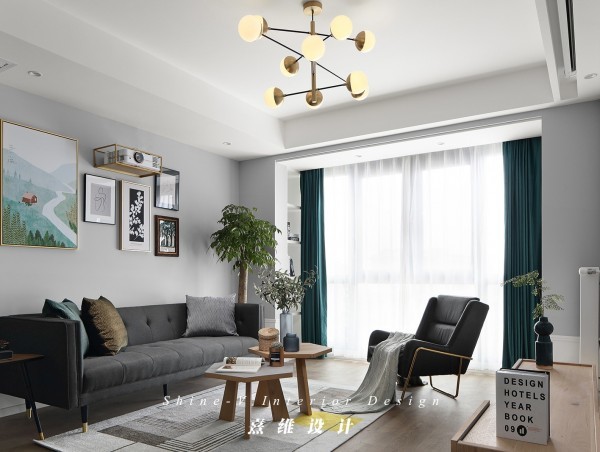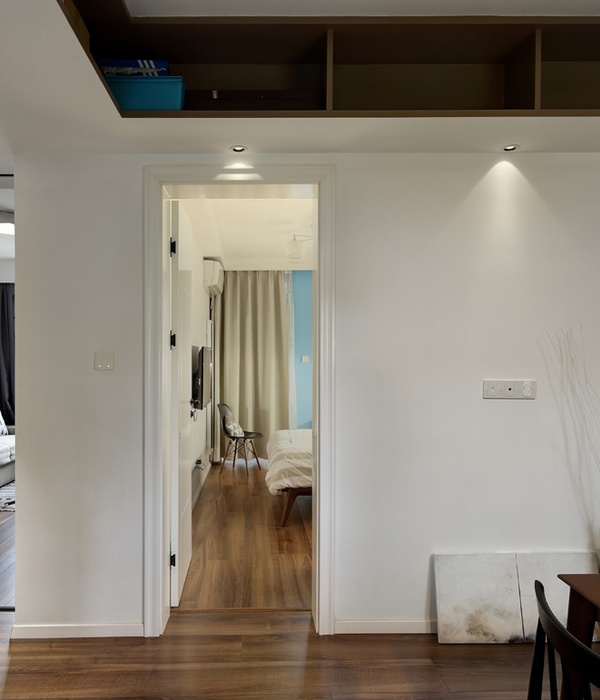This was the challenge Inter FC set DEGW and FUD (Lombardini22 Group brands focused respectably on the integrated design of workplaces and physical branding) in the project for its new headquarters in Milan. A stimulating project with excellent prospects for success in a magnificent location.
‘The Corner’, strategically located in the new map of Milan on the corner between viale della Liberazione and via Melchiorre Gioia, is a building designed by Atelier(s) Alfonso Femia based on the complete renovation of a 1970s construction. We are right in the heart of the Garibaldi-Repubblica neighbourhood, just a few minutes from the city centre, in place served by all kinds of excellent urban transport facilities. Inter is leaving its old headquarters in Corso Vittorio Emanuele to move to ‘The Corner’, whose much more spacious premises offer plenty of comfortable public areas for dealing with guests and clients and new spaces for accommodating business-executive operations based along the lines of innovation, sharing, speed, internationality, leisure, movement and well-being in a highly distinctive setting. A building – owned by Generali - whose new-found strength may be described as ‘black-and-blue’ (Inter’s club colours).
Facts & figures behind the project Inter’s new headquarters take up the top five floors (from the 6th-10th) of one wing of the urban footprint of ‘The Corner’ (an L-shaped building, whose standard floor covers an overall area of approximately 1700 m²) for a total of 4000 m² accommodating over 200 workstations. In addition to the indoor area, there are also 800 m² of terrace up above (a total of 1380 m²). Together this creates a workplace pleasantly lit by natural light offering plenty of views towards the surrounding city.
The project is based around a gradual stacking plan that gives shape and structure to the various levels. Staff with desk jobs have greater visual interaction with the surroundings just outside the building, while staff with more interpersonal duties are accommodated on the upper floors offering more extensive views across the city. This means that the 6th, 7th and 8th floors are used by desk-based staff, the ninth floor is a shared area for welcoming guests and hosting meetings with outsiders, the 10th floor is reserved for the executive/sports areas, and the 11th floor houses the terrace.
Project concept Located in one of the most dynamic parts of the recently regenerated city of Milan, Inter’s new headquarters are designed around an urban metaphor. The various areas are constructed in a carefully balanced combination of workspaces and ancillary areas. Everything is designed with great sobriety, so that the offices have a warm and homely feel thanks to wood finishes and plenty of landscaping. The club’s corporate identity is neatly embodied in the background through clever combinations of colours and materials (the floors, for example, have blue carpet in the enclosed offices, grey carpet in the open-plan spaces, and grey vinyl in the corridors) and brighter flashes of colour at strategic points throughout the premises. A flexible and transparent space enhanced with special features like walls ensconced with niches/conversation areas or open structures bordered by informal areas furnished with comfortable seats. All in all, an elegant space where the brand is treated with due respect for the club’s well-established values and internationality.
Shared space: the 9th floor
These values are also embodied in the shared areas up on the ninth floor, further “reinforced” by the striking communicative/representational force of the various functions: the main reception, which provides a perfect introduction the club, buttonhole, has a social wall conveying information coming straight from the official social channels; the Trophy Room, a circular island of trophies in an open-plan layout crowned by a loop of hanging pictures that looks rather like a frieze of moving icons (a display feature emerging from codesign workshops led by Alessandro Adamo, the director of DEGW); the Media Room, which is also used for holding training sessions, complete with a striking ceiling fitted with lights arranged in the shape of a football pitch; Inter Heritage, an experiential space providing an overview of the club’s history and displaying club memorabilia with the help of a high-tech glass panel; the Clock Room, where a bar and numerous chairs provide the ideal setting for enjoying food & beverages, is named after the restaurant where the Club was originally founded. Rounded off by a lounge and two reconfigurable meeting rooms, these are all flexible spaces adapting to multiple uses. Designed for hosting guests, the ninth floor was the trickiest and most stimulating design challenge for FUD and really embodies the true essence of the Inter brand.
Executive floor and terrace
A corridor with wooden walls with a warm and homely feel and a shiny stone-look tiled floor creates a long walkway through Inter’s corporate world surrounded by enclosed offices, break-time areas and a boardroom with a dark blue carpet: it culminates in a lowered structure where the club logo is on view from every angle. Dark blue, white, smooth tiles, light and transparency characterise these spacious areas serving miscellaneous functions that lead through to the large terrace up above: an open deck overlooking the city that can host guests for private events, special sets, meetings, lunches and relaxation time, protected by pergolas and landscaped areas of grass serving playful purposes, where the issue of greenery and natural materials is really brought to the fore.
Physical branding
Inter HQ as a means of communication
A brand is much more than just a symbol, sign or graphic language, and an office is the holistic embodiment of a brand. Working in “co-creative” partnership with the Club and Alkemy, FUD (the Lombardini22 Group brand specialising in branding and communication) has created a space that can and could only be Inter, so that you do not even need to see the logo.
Starting from the club’s history and values, physical branding has transformed the spaces into means of communication through a custom-designed project. The target, which has been successfully achieved, was to create an authentic brand experience by generating an architectural space that is memorable for anybody interacting with it and also easy to move around.
Borderless and timeless
The project concept is based on a deep understanding of the team’s history and values. What emerges is a desire to create a clear-cut architectural space that is regular, elegant, highly distinctive and designed in an identity-driven architectural idiom rooted in Milanese culture while, at the same time, opening up to the world.
The essence of the Inter brand is summed up in the words that conclude the Club’s founding articles: “We are Brothers of the World”. The expression ‘Brothers of the World’ is now a slogan adopted by Inter fans worldwide. The same slogan has been used for the new headquarters drawing on two intrinsic aspects of the very concept of being ‘Brothers of the World’: borderless and timeless. Being borderless was a guiding concept behind FUD + Alkemy’s project for the club’s new headquarters, while timeless describes how it has actually been designed: in a timeless style bringing together different periods in time and speaking to people of all generations.
Design
Physical branding was carried out on the entire headquarters, first and foremost the signage featuring pictograms created around the notions of asymmetry and movement based on an abstract rendering of the flags of the various nations that have contributed to the team’s history.
Each meeting room has its own brand identity, opens up its doors to internationality, and is entirely devoted to a certain country closely tied to Inter’s club history. For FUD, the naming process meant telling a story aimed at transforming the space into an immersive brand experience. FUD focused particular attention on the colour scheme. The colours of the flags are powerful enough to represent the very heart of these nations, with semantic parallels between colours and patriotic meanings. The aim was to create “talking” rooms that could tell a story and entertainment/amaze visitors and guests.
“We are really happy with this project – so Alessandro Adamo noted, the director of DEGW and a partner at Lombardini22 – because it is the result of a major process of participation and codesign. A process that saw us literally immersed in the world of Inter and totally engaged in what we were doing on a daily basis. We would like to thank everybody who helped us with this important project, particularly the club’s president, Stephen Zhang, who was always available when we needed his invaluable help.
We are completely satisfied with the result – so Adamo concluded – because we believe we have managed to represent an extremely complex entity in a building that is simultaneously a workplace and a place for hosting events, special business operations, media/communication enterprises and sports-related projects; somewhere that really leaves its mark on the collective psyche”.
[IT] Questa la sfida che FC Internazionale Milano ha posto a DEGW e a FUD, brand del Gruppo Lombardini22 dedicati rispettivamente alla progettazione integrata di ambienti per il lavoro e al physical branding, nel progetto del suo nuovo Headquarter a Milano. Un progetto che nasce da premesse stimolanti e con ottime prospettive di successo, a partire dalla location.
The Corner, collocato in una posizione strategica nella nuova mappa di Milano, all’angolo tra viale della Liberazione e via Melchiorre Gioia, è un edificio progettato da Atelier(s) Alfonso Femia che nasce dalla integrale riqualificazione di una struttura degli anni Settanta. Siamo nel cuore dell’area Garibaldi-Repubblica, a pochi minuti dal centro città, in un luogo ottimamente servito da tutte le infrastrutture di mobilità urbana. L’Inter si sposta negli spazi di The Corner lasciando la vecchia sede di corso Vittorio Emanuele e guadagnando in superficie e respiro, con ampi e comodi spazi per le aree pubbliche dedicate al rapporto con gli ospiti e i clienti e con nuove formule spaziali per le attività operative e dirigenziali che declinano i concetti di innovazione, condivisione, velocità, internazionalità, leisure, movimento e benessere in un ambiente di grande intensità rappresentativa. Un edificio – di proprietà di Generali – la cui nuova forza può essere definita nerazzurra.
I numeri del progetto La nuova sede dell’Inter occupa gli ultimi cinque piani (dal 6° al 10°) di un’ala del footprint dell’edificio The Corner (a forma di L, il piano tipo complessivo è di circa 1.700 mq di superficie) per un’area totale di 4.000 mq in cui sono distribuite oltre 200 postazioni di lavoro. Alla superficie indoor si aggiungono gli 800 mq della terrazza sovrastante e il tutto forma un ambiente lavorativo con una piacevole luminosità naturale e abbondanti visuali verso l’esterno urbano. Opportunità che il progetto interpreta con uno stacking plan progressivo che modula i diversi piani riservando all’operatività un maggior rapporto visivo con l’ambiente urbano più prossimo e alle funzioni più relazionali i livelli più panoramici con ampie viste sulla città. Così in una progressione verso l’alto i piani 6°, 7° e 8° sono dedicati alle funzioni operative, il 9° adibito ad area condivisa per ospiti e incontri con le realtà esterne, il 10° alle aree Executive e Sport e l’11° alla terrazza.
Concept di progetto
Collocata in una delle aree più in fermento dello sviluppo rigenerativo di Milano, la nuova sede nerazzurra fa ricorso nelle aree operative a una metafora urbanistica come concept progettuale. Le aree sono caratterizzate da un’equilibrata alternanza tra workspace e supporti, e sono state trattate con sobrietà, infondendo negli uffici un’atmosfera calda e domestica con finiture in legno e presenza diffusa di verde. La riconoscibilità corporate è risolta in background con leggerezza, grazie ad accorti accostamenti di colori e materiali (i pavimenti, per esempio, sono in moquette blu negli uffici chiusi, in moquette grigia in open space e in vinilico grigio nella circolazione), e con picchi d’intensità comunicativa in punti strategici dello spazio. Uno spazio flessibile e trasparente, articolato da oggetti speciali come pareti attrezzate nel loro spessore con nicchie e luoghi di conversazione, o strutture aperte che delimitano, in open space, aree informali con comode sedute. Uno spazio elegante, dove il brand è trattato in modo rispettoso dei valori consolidati e dell’internazionalità della società.
Shared space: il 9° piano Valori ugualmente declinati nelle aree condivise del 9° piano, ma “rinforzati” dalla vocazione di rappresentanza e comunicazione delle funzioni presenti: la reception principale, biglietto da visita per tutta la società, con il socialwall che veicola contenuti direttamente dai canali social ufficiali; la Trophy Room, un’isola circolare di trofei in ambiente open coronata da un anello continuo di immagini sospese, come un fregio di icone in movimento (soluzione espositiva che è anche frutto di workshop di co-progettazione condotti da Alessandro Adamo, direttore DEGW); la Media Room, anche dedicata alle sessioni di training, iconicamente sottolineate da un soffitto di luci lineari che disegnano un campo da calcio; l’Inter Heritage, un luogo esperienziale dove vive la storia della squadra, con l’esposizione di memorabilia e la celebrazione del Club supportate da una quinta vetrata tecnologica; la sala Orologio, dove il bancone bar e le diverse sedute invitano anche a una convivialità food & beverage, il cui nome deriva dal ristorante in cui venne fondato il Club. Completati da una lounge e due meeting room riconfigurabili, sono tutti spazi flessibili e adattabili a molteplici usi. In quanto pensato per gli ospiti, il 9° piano ha rappresentato per FUD l’area di intervento più complessa e stimolante, in cui far emergere appieno l’essenza del brand Inter.
Executive floor e terrazza Tra uffici chiusi, break area e una boardroom dalla moquette blu intenso, sfila un corridoio con quinta di legno dal caldo effetto domestico e un lucido pavimento ceramico effetto pietra che creano una lunga promenade immersa nel mondo corporate Inter: un percorso che trova il suo apice in una struttura ribassata dove il marchio è il punto focale di tutta la prospettiva. Blu scuro, legno, ceramica levigata, luce e trasparenza ne compongono gli ampi spazi articolati in più funzioni. Il quale è come un’introduzione alla grande terrazza soprastante: una piattaforma aperta e dispiegata sulla città che può accogliere gli ospiti per eventi privati, dj set, meeting, pranzi, momenti di relax, protetto da pergolati e quinte vegetali, stimolato da tappeti erbosi dedicati al gioco, dove il tema del verde e dei materiali naturali è pienamente sviluppato.
Physical branding Inter HQ come strumento di comunicazione Un brand è molto più di un simbolo, di un’insegna o di un linguaggio grafico, l’ufficio ne è la sua rappresentazione olistica. FUD, brand del Gruppo Lombardini22 specializzato in branding e comunicazione, in collaborazione “co-creativa” con il Club e con Alkemy, ha dato vita a uno spazio che può o potesse essere solo ed esclusivamente Inter, eliminando l’esigenza di vederne il logo. A partire dalla storia della squadra e dai suoi valori, il Physical branding ha trasformato gli spazi in strumenti di comunicazione mediante un intervento progettato ad hoc. L’obiettivo raggiunto è stato quello di creare una vera e propria esperienza di brand, completando lo spazio architettonico e generando memorabilità nelle persone che interagiscono con esso, facilitandone l’orientamento.
Borderless e timeless Il concept di progetto è partito da una conoscenza profonda della storia e dei valori della squadra. Emerge la volontà di dare forma a uno spazio architettonico deciso, regolare, elegante, dalla forte personalità, con un linguaggio fortemente identitario radicato nella cultura milanese e, insieme, rivolto al mondo. L’essenza del brand Inter è sintetizzata dalla frase che conclude l’atto costitutivo del Club: “Noi siamo fratelli del mondo”. Brothers of the World è oramai una firma, riconosciuta e adottata da tutti i tifosi nerazzurri nel mondo. La stessa firma è stata applicata alla nuova sede, facendo leva su due aspetti intrinsechi di Brothers of the World: borderless e timeless. Per il progetto di FUD + Alkemy, il concetto di borderless ha guidato il contenuto della nuova sede. Timeless è invece il trattamento scelto per vestirla: uno stile senza tempo capace di unire più epoche e parlare a tutte le generazioni.
Design L’intervento di Physical branding ha coinvolto tutta la sede, in primis il sistema di segnaletica, con pittogrammi sviluppati sui concetti di asimmetria e movimento basati sull’astrazione delle bandiere delle nazioni che hanno segnato la storia della squadra. Ogni meeting room ha la propria brand identity, ognuna apre le porte all’internazionalità e viene interamente dedicata a un Paese del mondo legato alla storia dell’Inter. In questo caso dare un nome ha significato per FUD raccontare una storia trasformando lo spazio in un’esperienza di brand immersiva. Un elemento cui FUD ha dedicato particolare cura è stato la calibrazione cromatica. Il potere del colore nelle bandiere è quello di riuscire a rappresentare l’anima della nazione, con parallelismi semantici tra cromie e significati patriottici. L’obiettivo è stato quello di realizzare delle stanze “parlanti”, capaci di raccontare una storia e intrattenere e stupire gli ospiti.
“Siamo davvero contenti di questo progetto – afferma Alessandro Adamo, direttore DEGW e partner Lombardini22 – perché è il frutto di un grande processo di partecipazione e di co-design. Un processo che ci ha visti letteralmente immersi nel mondo nerazzurro, a respirare il clima che ha alimentato ciò che stavamo facendo giorno per giorno. Ci sentiamo di ringraziare tutti coloro che ci hanno accompagnato in questa esperienza, in particolare il Presidente Steven Zhang che non ha mai fatto mancare la sua preziosa collaborazione. Il risultato ci soddisfa pienamente – conclude Adamo – perché riteniamo di essere riusciti a rappresentare una realtà complessa in un edificio che è insieme luogo di lavoro, di eventi e presenze speciali, di media e comunicazione, di sport e soprattutto di potente immaginario collettivo”.
{{item.text_origin}}


